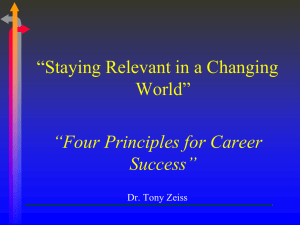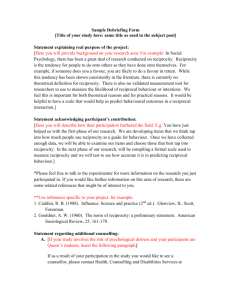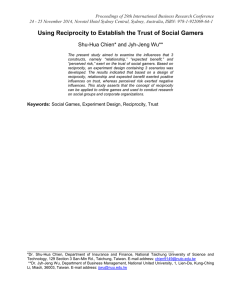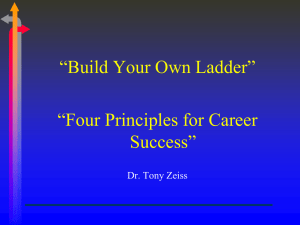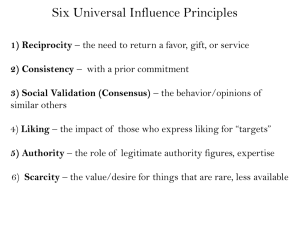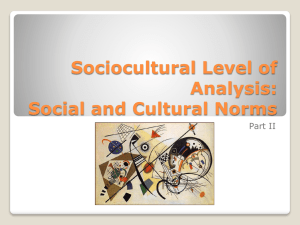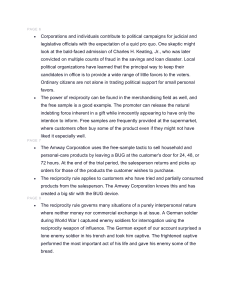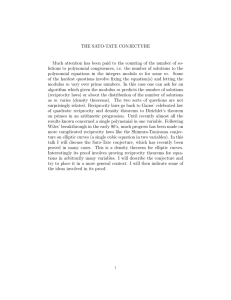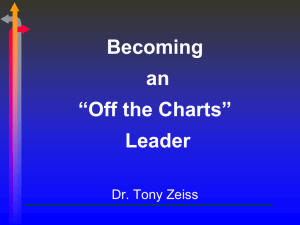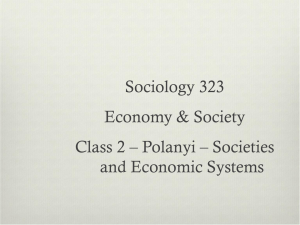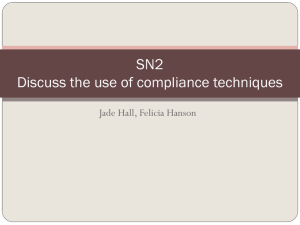Questions for Influence by Robert Cialdini
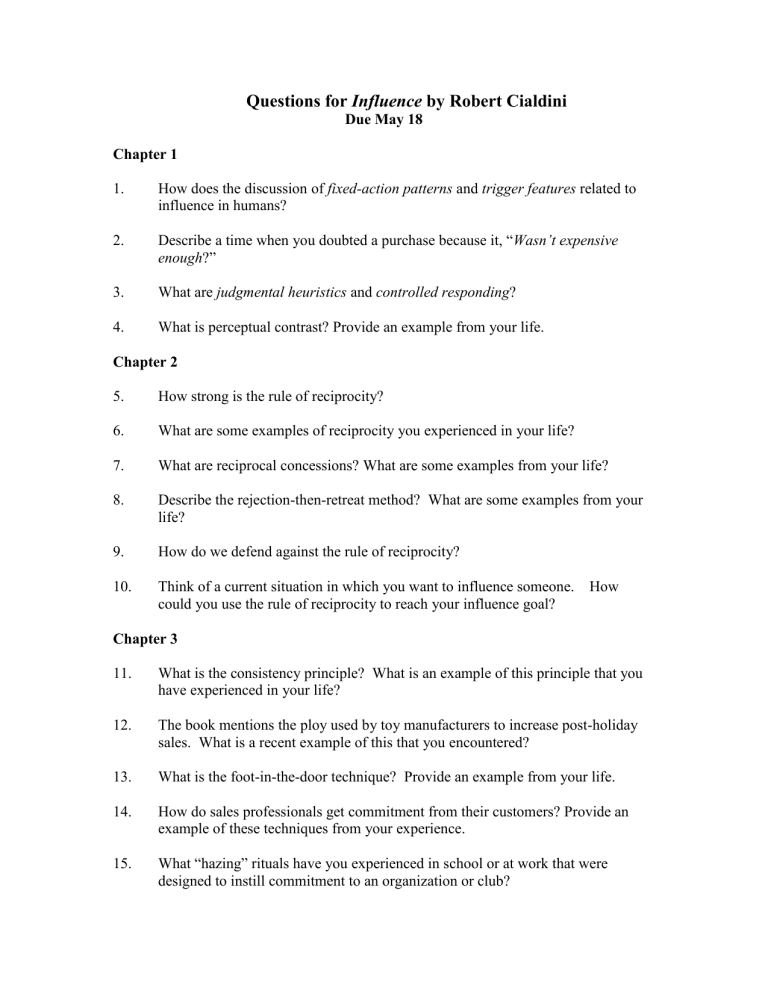
Questions for Influence by Robert Cialdini
Due May 18
6.
7.
8.
Chapter 1
1. How does the discussion of influence in humans? fixed-action patterns and trigger features related to
2.
Describe a time when you doubted a purchase because it, “ Wasn’t expensive enough
?”
3. What are judgmental heuristics and controlled responding ?
4. What is perceptual contrast? Provide an example from your life.
Chapter 2
5. How strong is the rule of reciprocity?
What are some examples of reciprocity you experienced in your life?
What are reciprocal concessions? What are some examples from your life?
Describe the rejection-then-retreat method? What are some examples from your life?
9. How do we defend against the rule of reciprocity?
10. Think of a current situation in which you want to influence someone. How could you use the rule of reciprocity to reach your influence goal?
Chapter 3
11. What is the consistency principle? What is an example of this principle that you have experienced in your life?
12. The book mentions the ploy used by toy manufacturers to increase post-holiday sales. What is a recent example of this that you encountered?
13. What is the foot-in-the-door technique? Provide an example from your life.
14. How do sales professionals get commitment from their customers? Provide an example of these techniques from your experience.
15. What “hazing” rituals have you experienced in school or at work that were designed to instill commitment to an organization or club?
16. Describe the low-ball technique . What is an example of this technique from your life?
17. Were the research studies mentioned in this chapter ethical? Why or why not?
Chapter 4
18. Describe the concept of social proof.
19. Describe an experience you have had with social proof.
20. What is pluralistic ignorance?
21. If you are hurt and need help, what advice does Cialdini offer?
22. What is the Werther effect? What are some examples given in the book?
Chapter 5
23. What factors are associated with people who are well-liked?
24. Provide examples of the above factors that you have encountered.
25. How could you use the principle of cooperation discussed in the text to solve conflict? Try to apply your answer to actual conflict that you are encountering or have encountered.
26. How can you use the discussion of conditioning and association to help you at work?
27. What is basking in reflected glory? Provide some examples that you have seen.
Chapter 6
28. Describe the experiment conducted by Stanley Milgram. What were his key findings?
29. Think of an example when you obeyed an order that you thought was wrong.
Why did you obey the order? What were the consequences? What could you have done differently?
30. What role do titles play in influence that occurs because of perceived authority?
31. What role does clothing and other trappings play in influence occurring because of perceived authority?
Chapter 7
32. What is the scarcity principle? Describe an example from your life.
33. What is psychological reactance? Describe an example from your life.
34. On the basis of what you read in this chapter, what would be the effect of a manager telling her employees that they must do something a certain way or that they are no longer allowed to do something?
35. How can one defend against paying too much when confronted with a scarcity tactic?
